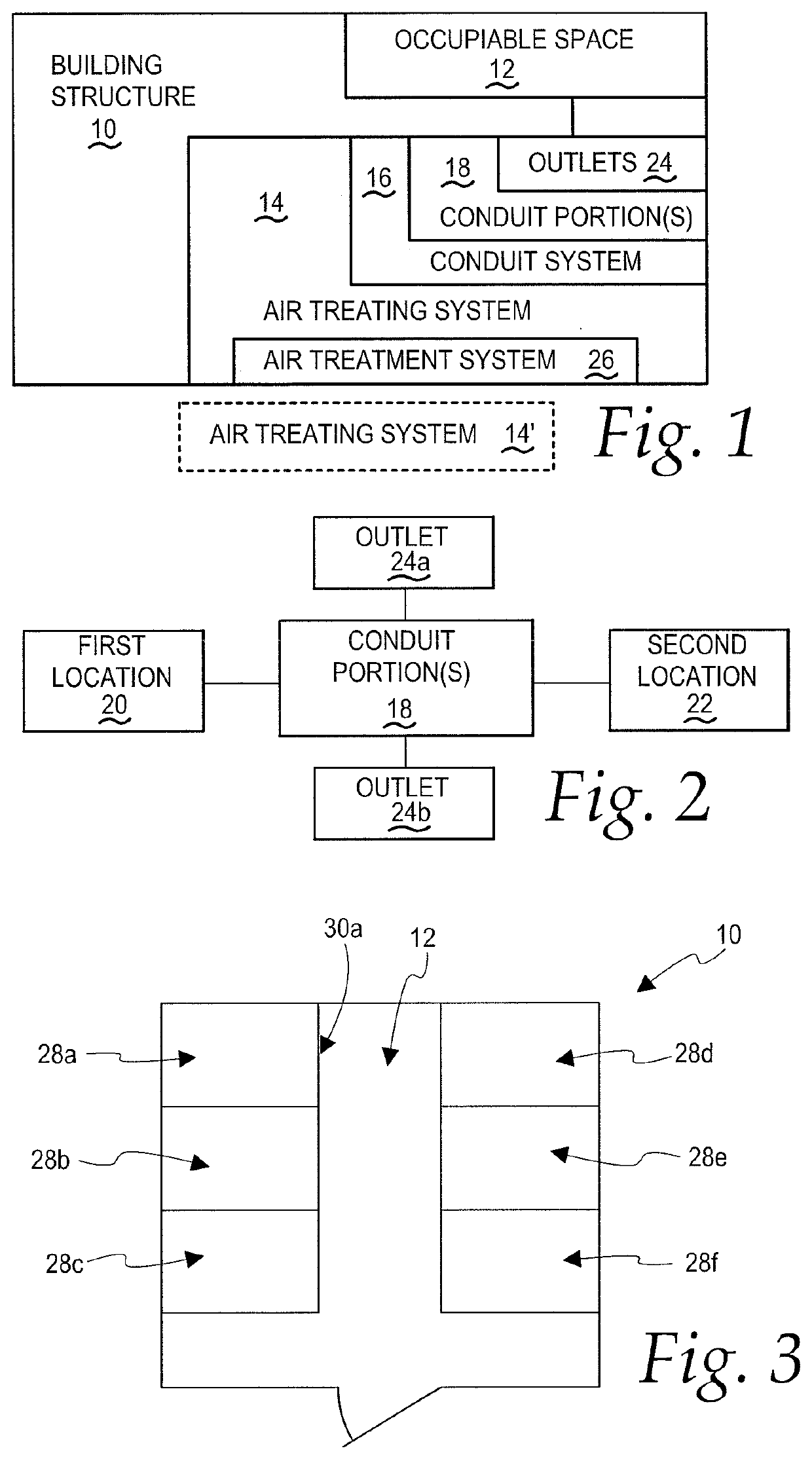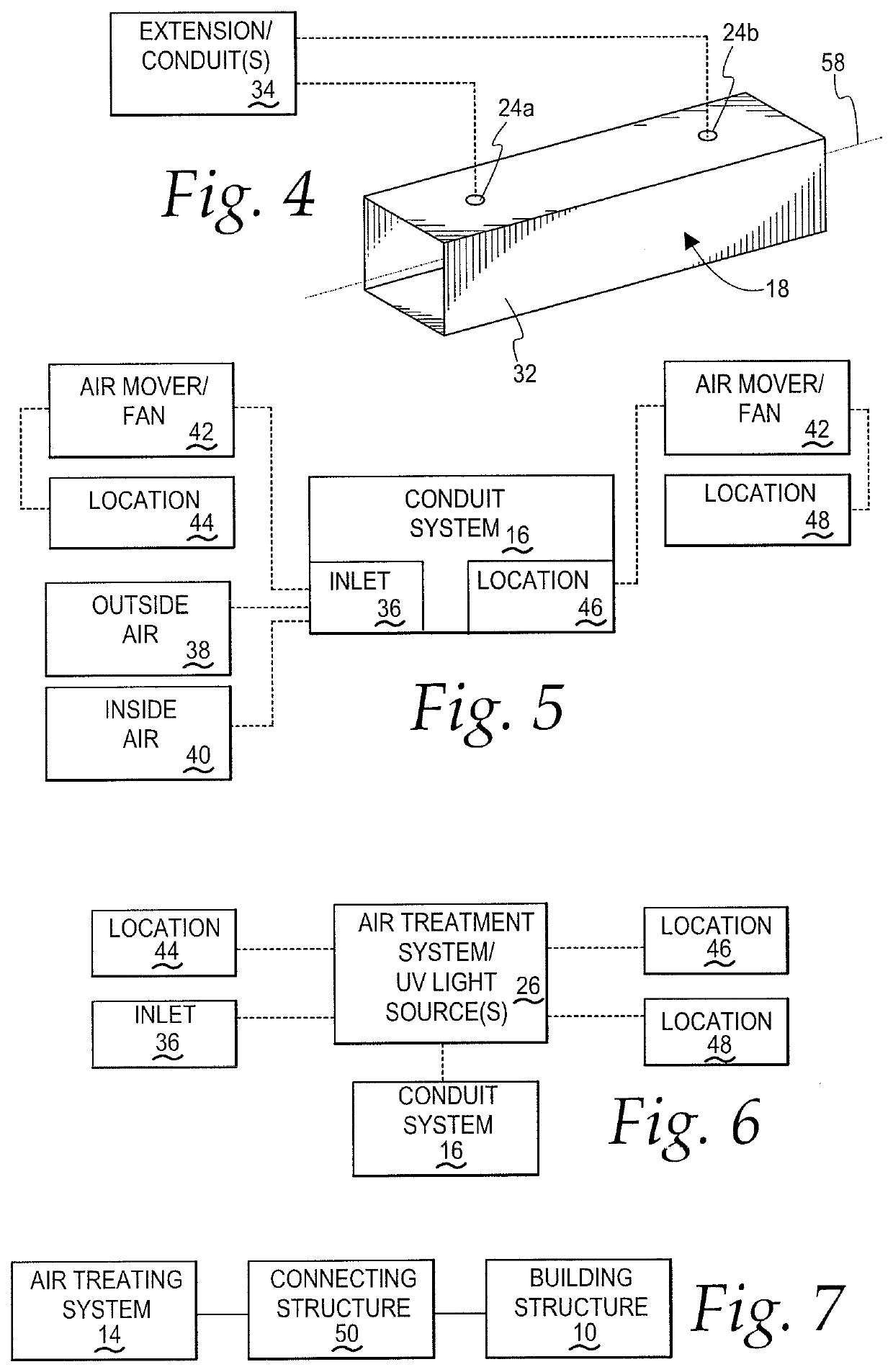System and method for treating air in an occupiable space
- Summary
- Abstract
- Description
- Claims
- Application Information
AI Technical Summary
Benefits of technology
Problems solved by technology
Method used
Image
Examples
Embodiment Construction
[0045]In FIG. 1, the invention is shown in association with a building structure 10 that defines an occupiable space 12.
[0046]A system 14 is provided for treating air within the occupiable space 12. The air treating system 14 may be integrated into the building structure 10 or may be a separate portable unit, as shown in dotted lines at 14°, that may be moved into and out of the occupiable space 12.
[0047]The air treating system 14 has a conduit system 16, including at least a first conduit portion 18, for guiding air in a predetermined path between first and second locations 20, 22, as shown in FIG. 2.
[0048]The conduit portion 18 has a plurality of outlets 24 between the first and second locations 20, 22 arranged so that a portion of a volume of air traveling between the first and second locations can be strategically discharged into the occupiable space 12 through the plurality of outlets 24.
[0049]The air treating system further has an air treatment system 26 that is operable to ki...
PUM
 Login to View More
Login to View More Abstract
Description
Claims
Application Information
 Login to View More
Login to View More - R&D Engineer
- R&D Manager
- IP Professional
- Industry Leading Data Capabilities
- Powerful AI technology
- Patent DNA Extraction
Browse by: Latest US Patents, China's latest patents, Technical Efficacy Thesaurus, Application Domain, Technology Topic, Popular Technical Reports.
© 2024 PatSnap. All rights reserved.Legal|Privacy policy|Modern Slavery Act Transparency Statement|Sitemap|About US| Contact US: help@patsnap.com










